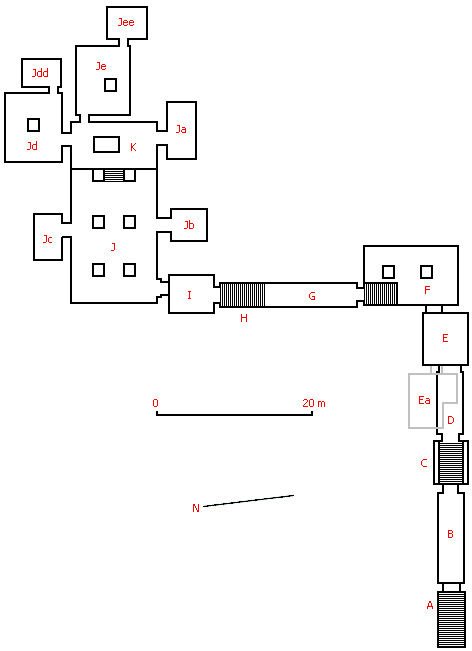![]()
West Valley of the Kings - WV22
tomb of Amenhotep III - XVIIIth Dynasty
|
The
tomb of Amenhotep III, most splendid pharaoh of XVIII dynasty was
officially discovered in August 1799 by two members of Napoleon's
Expedition. Most noticeable are the position of the room cut at the base
of the well shaft, the connection between the anteroom and burial
chamber, the direction of the latter room and the addition of two large
rooms to the crypt, each with a pillar and subsidiary storeroom. The
first of these (Je) appears to have been designed for the burial of
Amenhotep III principal wife, Tiji, and a number of funerary items are
evidently to be associated with this burial. The second suite (Jd) seems
to have been expanded from an original storeroom, it was
destined for burial place of Queen Sitamon. The
body of the king himself was
removed from WV22 to a side room in the tomb of Amenhotep II -
KV35. The 'Elder Lady', identified by some as the mummy of Tiji, was
recovered from this same tomb, though stripped of its bandages and
cached in room (Jc). In the tomb
H.Carter and, later, S.Yoshimura
& J.Kondo were founded some small objects and
fragments of funerary equipment. |
|
|
|
 |
|
A - entrance and first
stairs |
H - fourth stairs |
![]()
|
Copyright © 2000-2013 Dariusz Sitek, Czestochowa - Chicago - Ann Arbor |